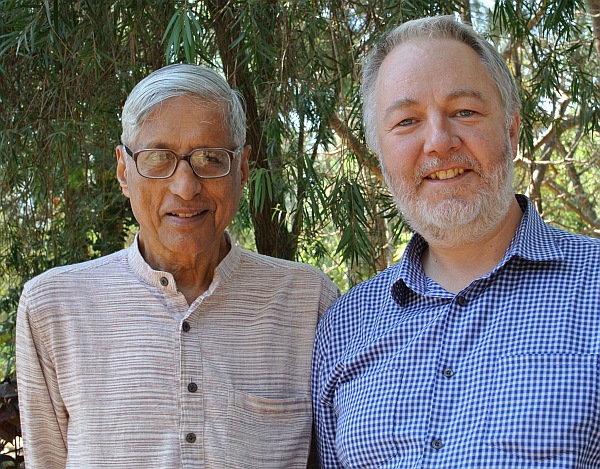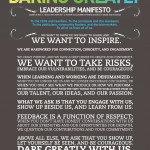
Back in February I travelled to India to participate in an international conference, Dialogue on Democracy, in Panchgani, Maharashtra. I was last there 27 years ago so it was interesting to reconnect with familiar places and faces and also to see how much had changed. It was also a chance to reconnect with Rajmohan Gandhi, grandson and biographer of Mahatma Gandhi, and I was fortunate to share a 5-hour taxi ride with him back to Mumbai after the conference finished.
A while back I purchased and started reading Rajmohan’s mammoth biography of his grandfather, but it was only after this visit to India that I was inspired to read it properly. And after reading it, it was several more months before I felt I had digested it enough to write a review. Well I have now done that. The review is on Amazon.com, but I also include it below.
Why include it in this blog? My answer is that anyone wanting to learn how to lead a diverse group of people, how to lead ethically, how to bring out the best in others, how to cope with crisis and adversity, how to plan for succession, and above all, how to inspire trust and respect in everyone, including his opponents, can learn from Gandhi’s life. I have read several other biographies, including Gandhi’s autobiography, but with all the others the man has still been somewhat of a mystery – so remarkable he didn’t seem quite real. With this biography you feel you really understand the man, what made him tick and his own inner struggles.
************
AS GOOD AS IT GETS
With so many biographies of Gandhi to choose from, including his own autobiography (which, however, only takes us up to 1921) why should we read this one?
The author, Rajmohan Gandhi, starts by confessing that he is no distant impartial observer but, rather, one of Gandhi’s grandchildren. He was a 12 year old schoolboy in Delhi at the time of the Mahatma’s assassination. His father, Devdas, was probably the closest of Gandhi’s children to their father to the point where Gandhi would seek out Devdas’s counsel. So although Rajmohan’s direct experience of his subject was limited he would have absorbed much from his father, a man with an intimate understanding of what made him tick, both personally and politically.
Then there is the fact that Rajmohan Gandhi comes to this work only after writing many other distinguished biographies and books on the history of the subcontinent. These include his biographies of Rajaji, (Rajaji, a Life), Vallabhbhai Patel (Patel, a life), Gaffar Khan, (Gaffar Khan: Nonviolent Badshah Of The Pakhtuns), Jinnah and other Muslim leaders (told in Understanding the Muslim Mind – also published as “Eight Muslim Lives”) as well as his study on the Indian Mutiny of 1857, A Tale of Two Revolts told in parallel with the story of Lincoln and the American Civil War which happened around the same time. Context is everything, and just as it would be impossible to write about Rajaji without understanding Gandhi, so this volume on Gandhi is the richer for the deep understanding of the other characters in the story of India’s struggle for independence.
The result is not a short book. As well as the vast body of literature already available, Rajmohan draws on private correspondence and documents from the family archives to give a remarkably detailed picture of the man and what made him tick. In telling the story of Gandhi, he is also telling the story of India in the first half of the 20th Century. We see Gandhi’s thinking develop over time from the shy young law student in London, the crucible experiences in South Africa to the statesman thinking for the long-term unity of the subcontinent when lesser politicians around him were prepared to sacrifice that for a short-term grab for power.
Gandhi himself was a keen student of history, and it was his own analysis of the failure of the 1857 revolt which contributed to the development of the strategy of Satyagraha, or “Truth Force” (Gandhi resisted the label “non-violence”). One of the book’s many strengths is the way it reveals Gandhi as a master political strategist – a useful corrective in an age when most people’s understanding of the man comes from one-liners shared on social media. This is no other-worldly cotton-candy saint, but a man with a totally realistic grasp of the murky politics of empire and the evils of greed, racism and arrogance institutionalized into a colonial system, as well as the institutionalized evils of his own culture – the caste system, subjugation of women and untouchability.
Some people today seem to equate Gandhi with non-violent protests, and then claim that it doesn’t work because nothing changes. To them I would say, read this book. Gandhi would never have expected that a few middle class people waving placards could shift institutionalized evil. His strategy was to first unite a divided and downtrodden people by identifying himself fully with the poor masses and trying to solve some of their most basic subsistence level problems. And then it was to provoke and keep provoking until he got a response – but always on carefully chosen issues where he held and could maintain the moral high ground. He understood that once the protests became violent, that this violence would be used to justify a much greater violence by the British to crush the protest. At a deeper level, Gandhi understood that real change comes from within – a stirring in the conscience which, when acted upon, becomes contagious.
The book does not shy away, either, from the more controversial areas of Gandhi’s life – in particular his experiments with brahmacharya (purity) which led him to sleep unclothed next to much younger women both before and after his wife died. To most people now and even to his closest associates back then, these actions seem incomprehensible. The author takes us as far as it is possible to go in understanding, by giving us Gandhi’s own explanations – often made to those around him who begged him to stop. My own feeling is that some further light can be shed on these radical experiments by the growing understanding of the brain chemical oxytocin and its role in both morality and creating trust. There is a fascinating TED talk by Paul Zak on this, The Moral Molecule, and an excellent discussion on the role of oxytocin in sex and relationships by Marnia Robinson in Cupid’s Poisoned Arrow: From Habit to Harmony in Sexual Relationships.
Towards the end of his life, the author relates, Gandhi was asked by an American journalist what message he would like to share. His reply was “My life is my message”. Reading this book is probably as close as we are likely to get to understanding that message.
Mike Lowe
Helping individuals and teams get into flow





